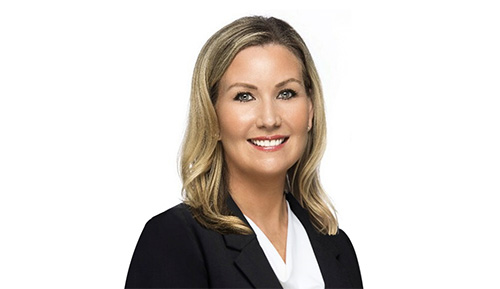
Anne Hill from Bayview PACE: Eight Reasons Banks are Warming up to C-PACE Financing

Anne Hill is Senior Vice President of Bayview Asset Management and Bayview PACE, Coral Gables, Fla. Bayview PACE offers creative financing solutions that combine construction, bridge and C-PACE lending. Unlike most PACE-only providers, Bayview PACE works with commercial property owners and developers to provide a full capital stack solution. Bayview PACE is a division of Silver Hill Funding, LLC. NMLS# 1564077 www.nmlsconsumeraccess.org. Visit www.bayviewpace.com for more information.
These can be challenging times for commercial real estate borrowers facing tight credit markets. It’s also stressful for banks who want to help their clients but are limited in what they can do. Enter C-PACE.
Traditional banks and financial institutions are increasingly embracing C-PACE as a complementary tool for their clients’ project funding. Commercial Property-Assessed Clean Energy (C-PACE) financing had faced headwinds in its early-adoption years from the understandable reticence of senior mortgage holders to endorse C-PACE on a client’s project – a stipulated requirement of C-PACE legislation meant to strengthen confidence in the emerging tool. Now, more and more banks are seeing the benefits of C-PACE from borrower demand for it, and its complementary role in the capital stack. Hundreds of banks now support C-PACE according to industry estimates.
Why is this emerging tool becoming a well-accepted option, particularly in the current market cycle?
C-PACE is providing a significant relief valve for borrowers trying to get new construction funded over the finish line, and for harvesting capital from recently completely developments to redeploy where it’s needed.
As more banks and institutions help facilitate C-PACE for their clients, there’s also growing understanding of its mutual benefits — and for the deepening of relationships for banks helping borrowers solve problems.
C-PACE’s Role in New Construction and Look-Back Financing
C-PACE has a number of applications but two situations are particularly popular of late: its additive role in construction lending and as a refinance look-back to free up capital from completed projects. Here are two examples.
Construction. A major bank’s longstanding client was unable to get a new hotel project to pencil-out, until C-PACE was brought into the capital stack. The Outbound Hotel & Cabins near Yosemite, Calif., utilized $19.8 million in C-PACE for environmental-related improvements, and is now well underway. The C-PACE loan actually exceeded the size of the bank loan and significantly reduced the bank’s whole dollar exposure on a low overall leverage loan stack. Not only did the C-PACE help get shovels moving, the bank secured significant depository accounts with the borrower in excess of the bank’s loan position.
Look-back financing. C-PACE is also popular with borrowers applying it to recently completed projects, up to three years in many jurisdictions. And from a bank perspective, refinancing existing loans allows them to recycle capital. A bank motivated to help one of its repeat clients supported a recent Bayview C-PACE refinance for a compelling capital structure of a senior living project, Varenita of Simi Valley. The PACE loan allowed a creative solution for the bank and the project sponsor. By reducing the bank’s overall position on the loan, the bank could recycle the capital to make other loans to the borrower. The transaction also upsized the total loan stack for eventual HUD takeout.
C-PACE upsides for borrowers and for their regular bankers go well beyond two anecdotes.
Benefits of C-PACE for Banks and Banking-Relationships
Here are a few ways banks are seeing the benefits of C-PACE:
C-PACE in the capital stack enables banks to continue the lending relationship with valuable clients while maintaining a healthy deposit-to-loan balance.
For mid-stream development projects that previously penciled but fall short amid tightening conditions, C-PACE fills gaps in the capital stack to get deals back on track.
C-PACE can be ideal rescue/gap financing and as spreads have come down, it is even more competitive to mezzanine and private debt from bank-competitors.
C-PACE is non-recourse financing that cannot be accelerated, preserving the bank’s lead position in the event of loan defaults.
C-PACE financing does not require inter-creditor agreements, keeping administration manageable.
C-PACE financing is applicable at any time during the property lifecycle ranging from new construction to retroactive financing.
Escrowing for PACE payments is recommended alongside escrow for insurance and taxes. This helps ensure that the PACE stays current and security position is maintained.
C-PACE loans can transfer upon sale of a property or be pre-paid at any time.
Just as other financing alternatives like CMBS have gained prominence in a complementary role for real estate project finance, C-PACE is gaining momentum as a strong contributor to most any capital stack. And its benefits for banks and their banking relationships is gaining recognition too. With program legislation currently enabled in 38 states, C-PACE is now a well-established vehicle for funding multi-million-dollar improvements in facility infrastructure such as HVAC, boilers, water systems, lighting systems, elevators and building-envelopes as well as for resiliency and energy including seismic improvements and storm-flood-fire resilience.
(Views expressed in this article do not necessarily reflect policies of the Mortgage Bankers Association, nor do they connote an MBA endorsement of a specific company, product or service. MBA NewsLink welcomes your submissions. Inquiries can be sent to Editor Michael Tucker or Editorial Manager Anneliese Mahoney.)
